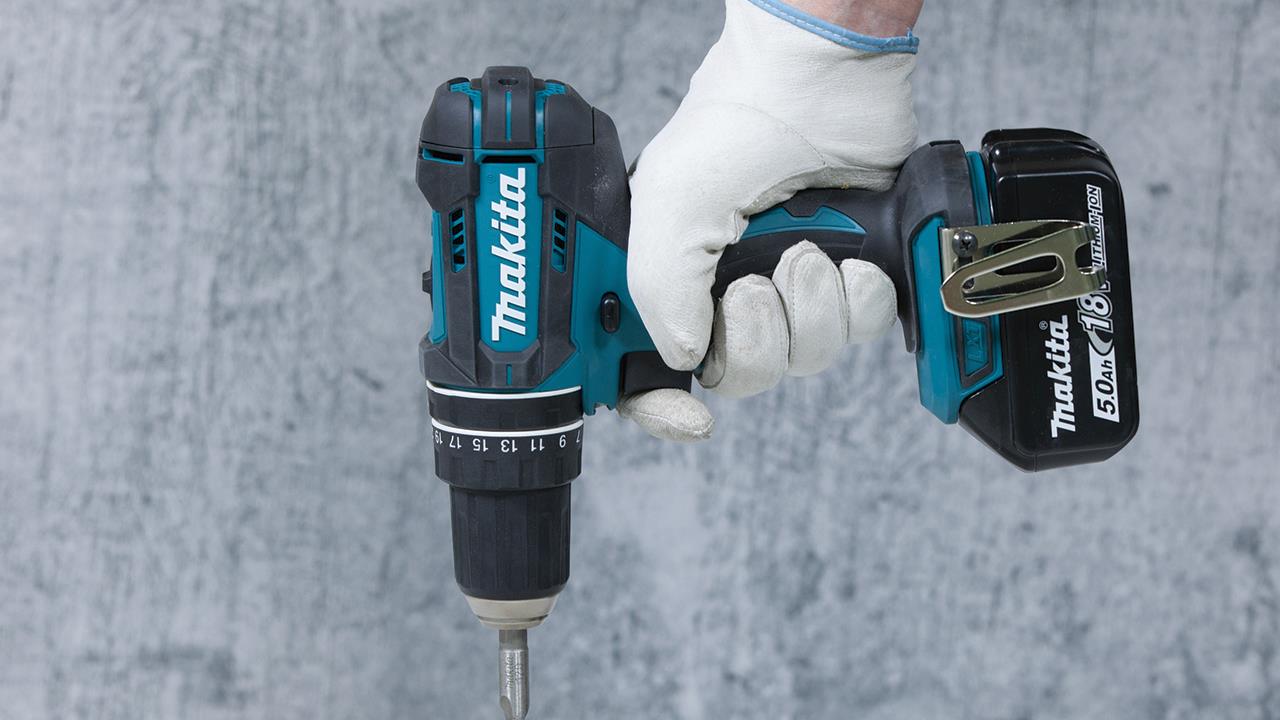

Martin Dunn, Senior Training Officer at Makita, discusses the key factors to think about when selecting power tools for all applications.
When it comes to power tools, it can seem like the available options are relatively similar, however it is important to look carefully at the product’s features to make sure it is indeed the right tool for the job.
Firstly, think about the power source of the tool. Flexibility is important, especially when working in awkward or hard to reach areas, and power supplies may not be located close by to lofts or external spaces. Therefore, opting for cordless tools and machines can be practical to cover off all eventualities.
With cordless tools, users are not constrained by a power lead, which means that they have increased freedom to move around the work area. They can position themselves in a way that makes the work easier and safer, and there are no trip hazards from trailing cables, as well as no need to carry around heavy transformers, improving safety. Set up time is also reduced, as charged tools are ready to use straight from the van.
The leading models of today are powered by lithium-ion batteries, which can hold high levels of energy and, as a result, will work for long periods of time without the need to charge them. This improves on-site productivity, as operators will be able to use the tools for longer.
Batteries can also be charged at any time as they don’t need to be drained down completely beforehand. Look for tools that feature batteries with LED charge indicators, this will make it easier to keep track of how much charge each battery has between use.
When batteries do require charging, leading manufacturers like Makita have optimised the charging process to reduce charge times, as well as to protect the batteries from damage. For example, Makita has designed its lithium-ion batteries to be able to communicate with the charger. Using CPU, the charger can identify any issues with the battery, such as over-load, over-discharge, or overheating. The charger can then rectify any issues – such as cooling the battery before charging takes place.
Fast charging lithium-ion batteries maximise your own productivity, helping you to complete the job quicker by reducing downtime while charging.
A number of cordless machines also benefit from the inclusion of brushless motors. Brushless motors are smaller in comparison to brushed alternatives, which means that many tools are more compact and lighter, but still deliver equivalent or greater power than their counterparts with a brushed motor. This is ideal when using tools over extended periods of time, as operator fatigue is reduced.
Brushless machines also require minimal maintenance, primarily because there are no brushes within the motor causing friction. When friction occurs, it can result in wear and tear and the need for replacement parts – this is not the case with a brushless motor.
Reduced friction also means that brushless machines are more energy efficient, as no energy is lost through heat production. These tools produce more torque per weight, which means less power is required to achieve the same result. This can lead to extended run times of between 30% and 50% on each battery charge.
Opting for cordless machines that also include a brushless motor can significantly improve productivity on-site and reduce disruption to the customer at the same time.
If you'd like to keep up-to-date with the latest developments in the heating and plumbing industry, why not subscribe to our weekly newsletters? Just click the button below and you can ensure all the latest industry news and new product information lands in your inbox every week.